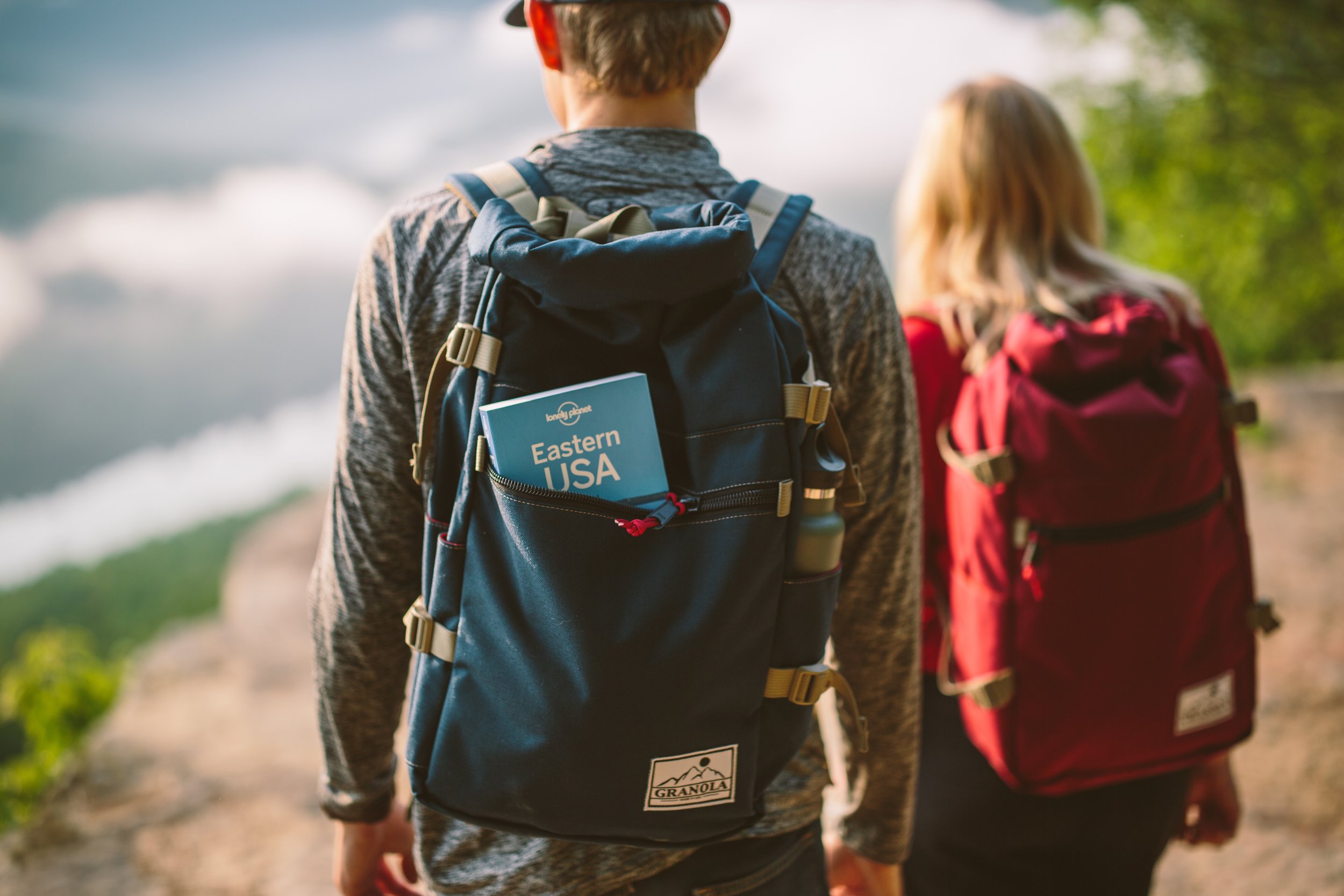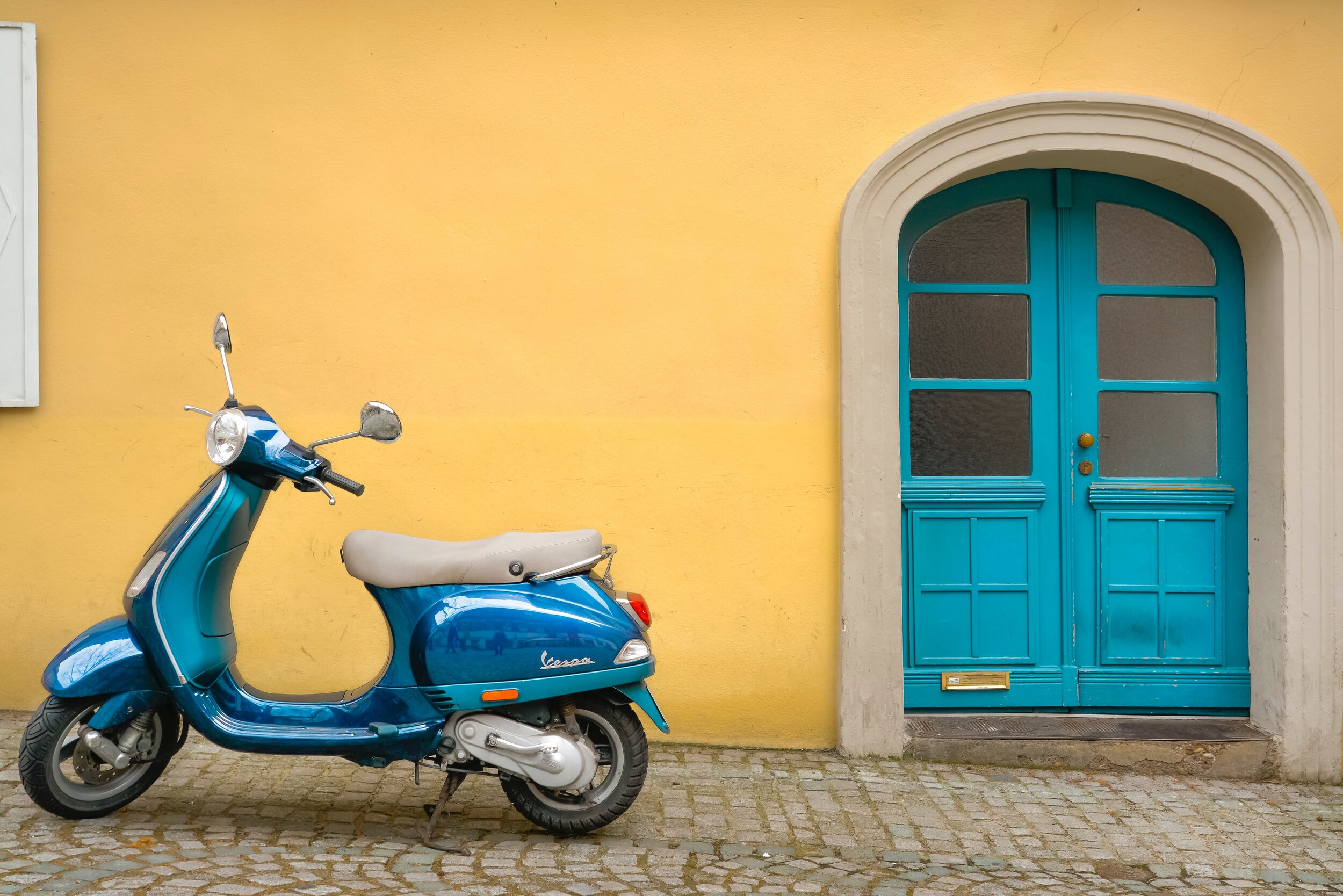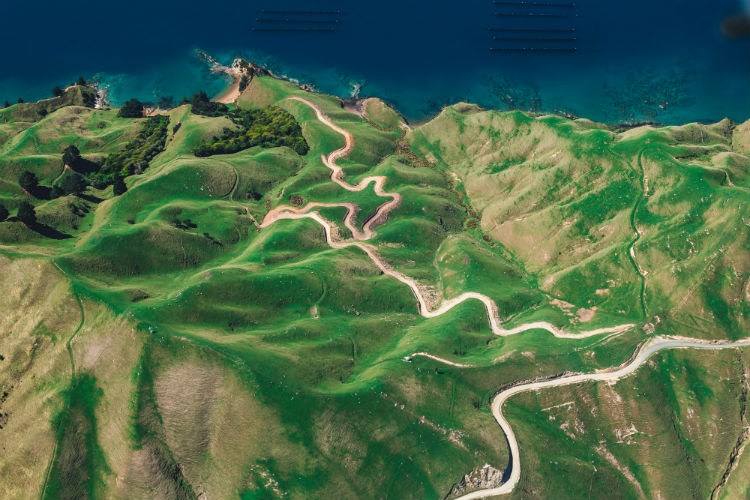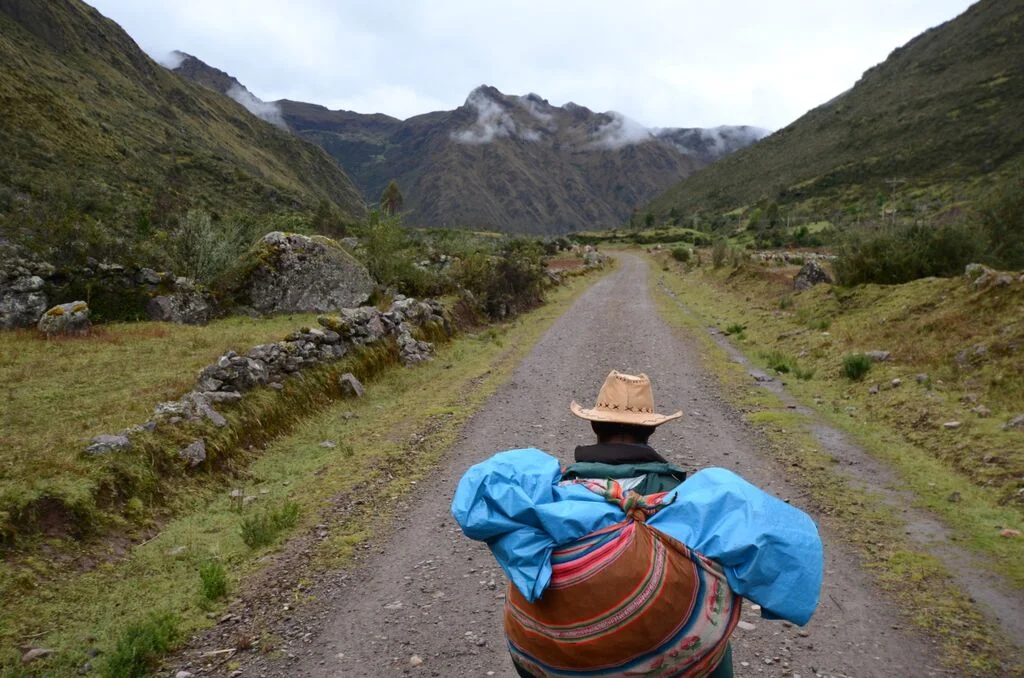An age-old question when it comes to traveling is “Should I go on a guided tour” vs. “Should I travel self-guided.” I have traveled both on guided tours and self-guided and I can honestly say there are pros and cons to each style. Personal preference, budget, and destination all can play a role in the decision process, so let’s take a look at when you would choose one type of travel over the other.

Guided Tours:
1. Guided tours are popular around the globe for many reasons. These days you can select a tour based on your budget, age and other demographics. You can choose a tour that takes you from place to place with 50 other tourists or you can choose smaller tours that cater to a slower pace of traveling perhaps.

2. I choose guided tours when my schedule does not allow me to plan a trip beforehand. The advantage of a guided tour is that the company will usually handle the logistics of getting around, research opening and closing times for all the activities, book your accommodations and even plan restaurants to dine in.
3. The wonderful part of guided tours is that you also don’t have to research the sights ahead of time. You will have a guide who can provide interesting background information on every place you visit and allow you to focus on the sights versus reading from a guidebook for example.
4. People who choose guided tours often enjoy the company of other people and like the idea of meeting new like-minded travelers like themselves.

5. My most recent guided tour was on a ten-day trek around the Tour du Mont Blanc in Europe. This trek crosses multiple borders, starting in France, through Switzerland, Italy and then back into France via the alps. Having an expert trekking guide alleviated me of my fear of heights in the alps. I also enjoyed meeting the other travelers in the group and learning more about their backgrounds. I did have plenty of free time post-hike before joining the group again for dinner. I didn’t have to worry about reading a map to try and figure out how to get from one place to another or getting lost in the alps as sometimes I didn’t see any others on the trail, other than my own group.

6. People also often choose guided tours when they are choosing places like Tanzania and Kenya for example, especially if they are intending on taking a safari. Off the beaten path places such as Namibia or India might be difficult to access as an independent traveler and many people might feel less nervous having a guide, especially if they are concerned with not knowing the local language.
7. One of the common disadvantages of a guided tour however is the downside of having to begin the tour every morning during the given time and also having to go everywhere the rest of the group is going. This is where you have to do a bit of research and make sure you choose the right guided tour for yourself, one that balances free-time and provides alternatives to the set itinerary.
Self-Guided Tours
1. There are plenty of companies who will help you with self-guided tours if you determine you don’t need a guided tour. This means you will be given maps and logistics information and it is up to you to get from point A to point B. You will not have access to a guide or to other travelers. In some cases, the tour operators will organize your accommodations with your input, and maybe even help with luggage transfers depending on the destination you’re traveling to.

2. Take for example the Annapurna Circuit trek in Nepal. This is a trek that can be done self-guided with a permit, through the Himalayas in Nepal. The nice thing about this trek is that there are often Sherpas and guides along the way if you change your mind and decide you need a guide. The route is marked and you will receive information about where to stay each night, and other recommendations on where to start and stop.

3. You can also do a self-guided safari in Kruger National Park or join a guided multi-day safari in Tanzania’s remote Serengeti. A self-guided one-day drive through the Kruger National Park might be manageable but attempting to cross the Serengeti on your own may be more overwhelming and best left to the experts.
4. I recently decided to go on a self-guided five day trek in the Bernese Oberland region in Switzerland. The trails were well marked and even though I didn’t see too many people at any given time, I had no problems. It was also more affordable than going on a guided tour and I wasn’t really looking to meet other travelers in a tour group type environment. I enjoyed the freedom of starting when I wanted in the mornings, stopping where I wanted to eat what I wanted and relaxing in the evenings in restaurants of my choice without having to make conversation with a tour group.

5. The self-guided option is for people who are comfortable experiencing an adventure on their own with minimal guidance and it’s a safe way to have an adventurous trip without getting lost and feeling isolated.
Deciding which type of travel to choose depends on what you’re in the mood for when you are ready to take a trip. It depends on your personality, your need for risk and adventure, your budget, and prior travel experience. If you want to have control of most aspects of your trip, a self-guided trip is best. If you think having a guide will make you feel more comfortable, worry less, and enable you to better immerse yourself in the daily activities, then go with a guided tour.
📍Iceland
6-8 days from $4,200
Limited to 16 travelers
See Details >
50% off with code: “50OFF”
For select travel dates until December 2025
Offer expires March 31st, 2025
📍Peru
7 to 10 days from $3,800
Limited to 16 travelers
See Details >
50% off with code: “50OFF”
For select travel dates until December 2025
Offer expires March 31st, 2025
📍Spain
7 days from $3,600
Limited to 16 travelers
See Details >
50% off with code: “50OFF”
For select travel dates until December 2024
Offer expires March 31st, 2025
📍Bologna, Italy
7 days from $3,600
Limited to 16 travelers
See Details >
50% off with code: “50OFF”
For select travel dates until December 2025
Offer expires March 31st, 2025
📍Montone, Italy
7 days from $3,600
Limited to 16 travelers
See Details >
50% off with code: “50OFF”
For select travel dates until December 2025
Offer expires March 31st, 2025
📍Amalfi Coast, Italy
7 to 11 days from $3,600
Limited to 16 travelers
See Details >
50% off with code: “50OFF”
For select travel dates until December 2025
Offer expires March 31st, 2025
📍Croatia & the Balkans
7 to 11 days from $3800
Limited to 12 travelers
See Details >
50% off with code: “50OFF”
For select travel dates until December 2025
Offer expires March 31st, 2025
📍Bali
8 days from $3600
Limited to 16 travelers
See Details >
50% off with code: “50OFF”
For select travel dates until December 2025
Offer expires March 31st, 2025
Depending on how long a journey is, travelers usually find it difficult to maintain some healthy habits while traveling. Most of them just want to sit in there and have the journey completed even if the journey were to last for more than 6 hours! Whether you are getting on a flight for a business trip or some sort of vacation or going by any other means of transportation, there are some healthy tips to take into consideration during any journey and one of the most important is making sure to stay hydrated. Dehydration can worsen a jet lag effect if you flew for long, making it more difficult for you to adjust to the time change. Here are some tips that can help you stay hydrated during any journey.
Tips to help you make smart travel decisions during this time of uncertainty. *Always seek advice from the CDC and Government websites of your home country and the countries or locations you are planning to visit.
Rated as one of our top 20 destinations to visit in 2020, a trip to Peru is truly incomplete without a visit to the former capital of the Incan empire and UNESCO heritage site, Cusco. Situated in the Peruvian Andes at an elevation of 3,400 meters, Cusco is vibrant in its colonial historic architecture, incredible local cuisine, cobblestone streets and markets abundant in textiles of every color. Cusco serves more than a gateway to Machu Picchu and here's why you might want to spend a few extra days in this city, with our list of things to do in Cusco.
What is your dream? Your passion? Have you ever considered that that dream could become your livelihood? The key to monetizing your dream is understanding your story and your passion. Through traveling all over the world, I gained many deep insights that became part of my personal brand-building journey.
Shrouded in mystery, Bhutan is one location to which not many tourists have had the pleasure to travel. So what do you need to know to get ready for your first trip to Bhutan? Read below to find out!
Morocco is full of new surprises, smells, and colors at every turn. It’s a mix of African, Middle Eastern, and European influences all blended together — which pull you in every direction possible. While some first-time visitors may experience culture shock, these Morocco travel tips will prepare you for the trip of a lifetime.
An age-old question when it comes to traveling is “Should I go on a guided tour” vs. “Should I travel self-guided.” I have traveled both on guided tours and self-guided and I can honestly say there are pros and cons to each style. Personal preference, budget, and destination all can play a role in the decision process, so let’s take a look at when you would choose one type of travel over the other.
If travel is on your to-do list this year (and it really should be!), then you are in luck, because the new year has brought new travel apps for iOs and Android that will make your travel even smoother and easier than ever before. From apps that help you translate words into a variety of languages, to ones that organize all of your reservations into one central spot, these new apps will help you during each and every step of your travels!
We’ve all been there: stuck at our office desks, daydreaming of our next family vacation or romantic getaway. Yet, for most of us, flight prices can determine not only where we travel, but also whether or not we can travel at all. With budget-friendly accommodations readily available around the world, traveling abroad on a budget is easier than ever, but high flight prices can prevent us from ever getting there. The good news? Airlines often have killer deals--from mistakenly published fares and special promotions to low off-season rates. Cheap flights are out there; you just have to know how and where to look for them! Follow the steps below to make sure you get the cheapest flights to your dream destinations!
When you think of “travel” foods, chances are you think of fast food drive-throughs or over-priced airport sandwiches and snacks. After all, when you’re “on-the-go,” it’s tempting to just grab something quick and easy that doesn’t require too much thought or preparation. But healthy choices aren’t always available in airports or on the road, which leaves you with few options besides fried foods, sugary drinks, and empty-calorie snacks. The good news is, whether you’re travelling on a plane or on the road, there are a few simple and effective strategies that can help you maintain your health while traveling. Continue reading to find out how!
No matter what type of travel you may prefer—whether your happy place is lying on a beach in the Caribbean or trekking up Mt. Kilimanjaro—we all have fantasies about faraway places and adventurous experiences. But have you ever stopped to consider the impact that you’re having on the places that you visit?
Whether you are taking off for a weekend getaway or crossing off another international dream destination from your bucket list, the option to purchase travel insurance will always present itself to you. We have compiled some important information about travel insurance to help you make the right decision, for you, when it comes to your travel investment.
A new year means new adventures, and there’s no better way to celebrate than with the trip of a lifetime. With so many incredible options out there, it’s hard to choose which getaway is the trip for you, but we’ve got your back. We’ve narrowed down the hottest destinations of the year to come, from the shores of Belize to the mountains of China. Keep reading to find out the top trips to take in 2019!
Everyone dreams of the ultimate getaway, but many think it’s out of their price range. However, you don’t need to break the bank to enjoy a luxurious vacation. It’s possible to experience a piece of paradise while on a budget. Whether you long for a tropical oasis, bewitching city, or countryside retreat, the possibilities are endless—but we’ve narrowed it down. Keep reading to learn about five affordable getaways that feel totally luxe without the high price!
Traveling is a time of experiencing new adventures, connecting with different cultures, and creating lifelong memories. It’s an invaluable way to learn about both yourself and the world around you—all while having fun. But as exciting as traveling is, it can also be pretty stressful. Luckily, there’s all kinds of gadgets out there to ensure a stress-free vacation. Keep reading to find out our favorite travel accessories!
There’s nothing better than getting out into the world and exploring faraway places you’ve always dreamed of visiting. For many, the idea of traveling abroad seems unattainable and too expensive. However, there are plenty of ways to save on travel and have an unforgettable experience without breaking the bank. Keep reading to find out our top tips for saving money on travel!
Here are a few ways to give back while you’re traveling that are sure to make every journey the most perfect and mutually-beneficial journey possible.
There’s something incredibly special about traveling solo. For many, the idea of visiting a new country all alone is terrifying, but solo travel can be a priceless period of self-reflection, education, and growth. Facing your fears and putting yourself out there is so worth it, and it’s the best way to truly immerse yourself in a new culture. There’s nothing quite as rewarding as traveling solo—it’s an unforgettable adventure that everyone should experience at least once. Keep reading to learn the best countries for solo travel!
Airfare doesn’t have to be expensive. If you know how and where to look for these mistake fares, you can find the absolute cheapest flight and be on your Acanela Expedition in no time.
Organizing a trip to Europe with your children can seem to be a very hard job. You have to consider accommodation options, flight arrangements, and what cities and destinations you want to visit. When you have little children and you are going on a trip with them the learning curve is can be strong and sharp.
When you are traveling you don't want to have to worry about carrying a lot of luggage with you. This is why I recommend just packing in a single carry-on. So how do you look cute with items that can only fit into a single carry-on? The answer is simple - by choosing the right 15 pieces to pack! With just 15 items (shoes included) you can create a wardrobe of over 50 outfits! That is enough outfits to last you 1 week, all the way to 2 months of traveling. I have listed all the items that I pack in my carry-on suitcase below:
Having the right gear to document your travel experience is important. Below, I have shared what I bring in my technology bag on all my trips around the world (this gear has traveled to over 80 countries).
Jet lag can be the ultimate bummer after a nice, relaxing trip. If you travel often, you probably experience jet lag on the regular. There are ways to overcome jet lag and train your body to get back into your daily routine.
Is your travel fund running low? Us too! We are still early in 2018 and now is a good time to look at your finances and really get a grasp on what you have, owe and have the ability to save. Learning to be creative with your savings is a guaranteed way to have some spare cash at the end of each month. Saving money is a long term habit and when you really commit to saving each month, the savings over time will grow. By the 12th month, you’ll feel accomplished at your ability to save just a little every month.
Airports and airplanes are germ central. The good news is, they don’t have to be! Airports are full of travelers that have been from one end of the globe to the other, making way for germs to follow in their footsteps. Taking precautions before you leave your home and again when you arrive at the airport is a guaranteed way to lessen your chances of bringing germs home with you on your return flight.
As the temperature drops, it signals that the holidays are right around the corner. Leaving people questioning: what is the ideal time to start planning for holiday, or even summer, vacations? If you’re already set on where you’re traveling (international or domestic), definitely opt for advanced booking. In the 2-3 month range, prices for flights may fluctuate but will stay on the lower side of the spectrum. Waiting for the one month range will leave you out of luck and emptying your pockets.
We all know that traveling with kids can either go both ways - perfectly smooth or totally chaotic. We've rounded up the best tips on how to travel with kids for your next trip!










































📍Greece
7 day from $3,800
Limited to 16 travelers
See Details >
50% off with code: “50OFF”
For select travel dates until December 2025
Offer expires March 31st, 2025